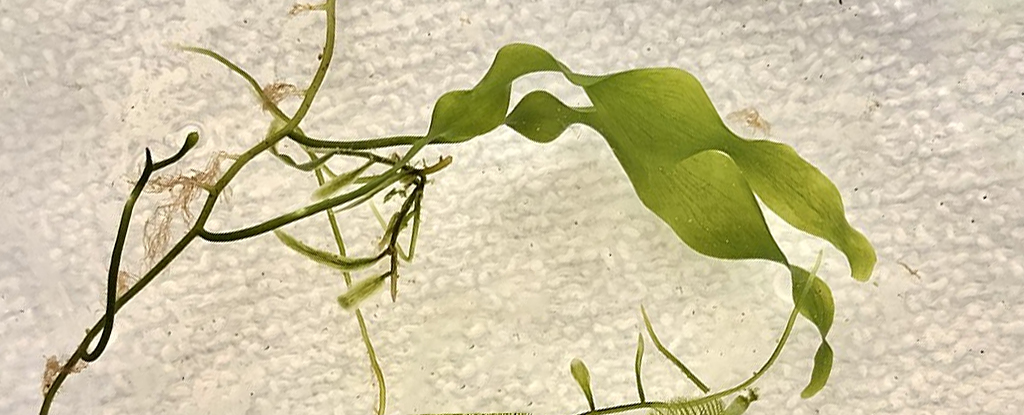Plants, animals, and many fungi typically grow through the process of binary fission, a form of asexual reproduction that allows a cell to divide, multiply, and produce new cells that are specialized for certain activities.
However, not all macroscopic organisms play by the rulebook. A number of large seaweeds, like the leafy green algae Caulerpa, lack microscopic dividing structures, making them some of the biggest single cell systems known.
These plant relatives can still grow meters in size, and are so great at gobbling up sunlight to expand they’ve become successful invaders in many new territories.
But what orchestrates the growth process when a body is, in effect, one giant cell?
To find out, California Institute of Technology biological engineer Eldad Afik and colleagues hacked off bits of the species Caulerpa brachypus to see how it regrew.
“A main paradigm in cellular biology is that the internal environment of a cell is dictated by its environment and what happens in the nucleus,” says Afik.
“But in Caulerpa, there’s nothing to separate the nuclei from one another.”
Even without membranes and walls to divide the plant’s numerous nuclei, this intriguing organism still manages to organize itself into organ-like structures that resemble leaves, stems, and roots.
After cutting off bits of the algae, the researchers observed differences in the intensity of green pigmentation at its regeneration sites. At night, these spots were relatively transparent, whereas during the day, they became a solid, opaque green.
Exposing specimens of C. brachypus to 12 hours of bright light followed by 12 hours of darkness, the researchers found the algae’s leaves grew longer than those on specimens exposed to bright light for 24 hours straight, suggesting a night of ‘sleep’ is essential for maintaining their self-organization.
When bathed in light, parts of Caulerpa’s body were flooded with a verdant wave of chlorophyll that allowed it to photosynthesize and grow. At night, this wave of greenness appeared to crash, during which the algae rested.
What’s really interesting, however, is that the algae seemed to predict when dusk and dawn were going to arrive. It changed its chlorophyll activity before the new light conditions even arrived, hinting that the algae has a sort of internal circadian clock which it uses to grow and develop.
“We find distinct morphologies depending on light temporal patterns, suggesting waves of chlorophyll could link biological oscillators to metabolism and morphogenesis,” the researchers explained in their paper.
As the green chloroplasts spread according to the day-night light cycle, it provides the giant blob with not just a sense of time, but position as well.
This gives algae the equivalent of knowing its head from its butt, allowing it to determine when and where to grow. No ‘cells’ required.
This research was published in Nature Communications.


